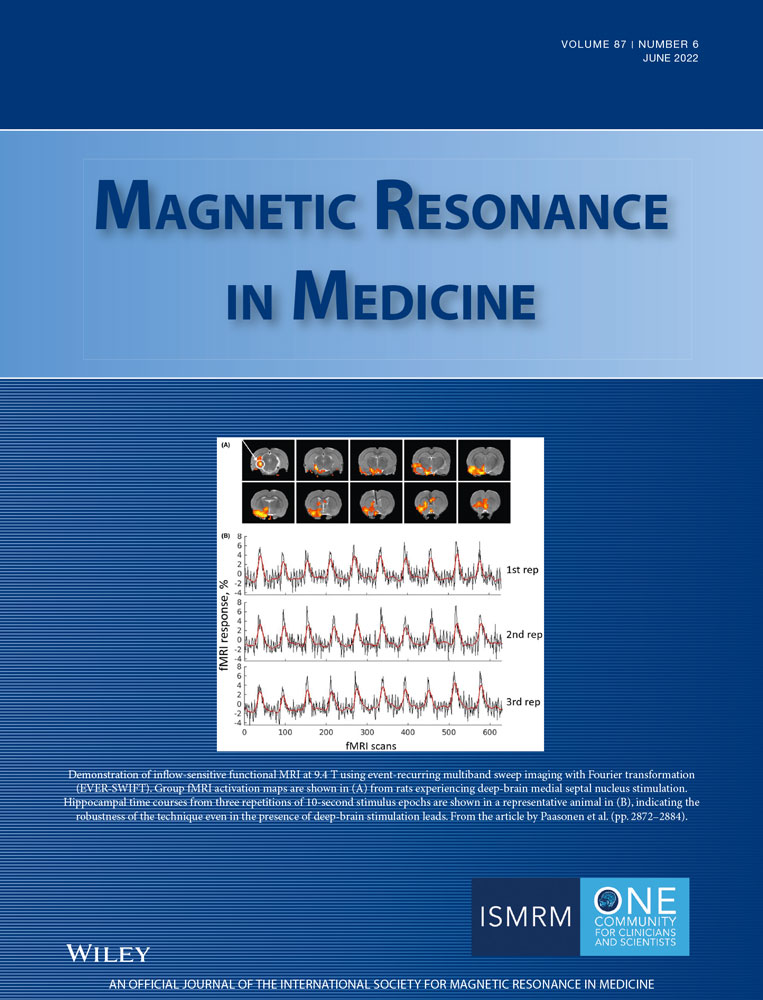Respiratory-triggered quantitative MR spectroscopy of the human cervical spinal cord at 7 T
Funding information: Agence Nationale de la Recherche, ANR-11-EQPX-0001; Excellence Initiative of Aix-Marseille University, A*MIDEX-EI-17-29-170228-09.43-Imetionic-7; Fondation pour l'Aide à la Recherche sur la Sclérose en Plaques, France Life Imaging, ANR-11-INBS-0006
Abstract
Purpose
Ultra-high field H MR spectroscopy (MRS) is of great interest to help characterizing human spinal cord pathologies. However, very few studies have been reported so far in this small size structure at these fields due to challenging experimental difficulties caused by static and radiofrequency field heterogeneities, as well as physiological motion. In this work, in line with the recent developments proposed to strengthen spinal cord MRS feasibility at 7 T, a respiratory-triggered acquisition approach was optimized to compensate for dynamic B field heterogeneities and to provide robust cervical spinal cord MRS data.
Methods
A semi-LASER sequence was purposely used, and a dedicated raw data processing algorithm was developed to enhance MR spectral quality by discarding corrupted scans. To legitimate the choices done during the optimization stage, additional tests were carried out to determine the impact of breathing, voluntary motion, body mass index, and fitting algorithm. An in-house quantification tool was concomitantly designed for accurate estimation of the metabolite concentration ratios for choline, N-acetyl-aspartate (NAA), myo-inositol and glutathione. The method was tested on a cohort of 14 healthy volunteers.
Results
Average water linewidth and NAA signal-to-noise ratio reached 0.04 ppm and 11.01, respectively. The group-average metabolic ratios were in good agreement with previous studies and showed intersession reproducibility variations below 30%.
Conclusion
The developed approach allows a rise of the acquired MRS signal quality and of the quantification robustness as compared to previous studies hence offering strengthened possibilities to probe the metabolism of degenerative and traumatic spinal cord pathologies.
Open Research
DATA AVAILABILITY STATEMENT
The in-house developed Python package dedicated to MRS data processing and quantification was made open-source and publicly available at https://crmbm.univ-amu.fr/softwares/pastis




